6 Ways To Encourage Students To Do Creative Work
And Picture Books To Illustrate Them
Here are 6 things you can do that will encourage your students' creative work.
Get Rid of Distractions
Creativity thrives in a quiet environment, for example:
-
Silence, or quieting sounds. (In our art lessons we recommend having music in the background because kids often find complete silence a bit overwhelming.)
-
Uncluttered space. Noise can distract us from creative work, but so can clutter.
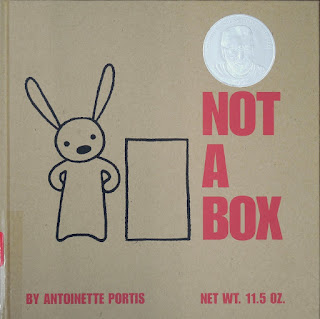
The sparse layout of the book, Not a Box, is a reminder of how creative and productive we can be when we are not distracted by clutter and noise.
Set Boundaries
Creativity thrives on limitations and routine. Having a daily routine - devotions, mealtimes, chores, a routine for starting projects and for cleaning up - provides a foundation for that kind of quiet. Creativity isn’t helped by chaos.
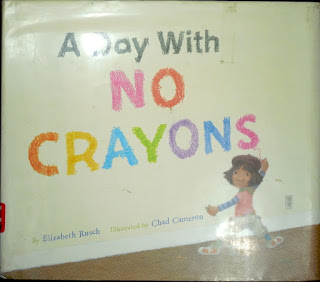
Liza, in A Day with No Crayons, thinks she knows all there is to know about how to color - until she faces a limitation: a day without crayons. She discovers that there are lots of ways to make pictures, and you don’t NEED to have crayons to color. It has taken a limitation to give her creativity a boost.
Give the Gift of Confidence
There are plenty of kid’s books to remind us how to give kids the confidence they need to be creative.
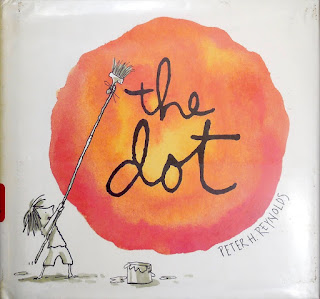
1. Appreciate effort
In The Dot, Vashti is convinced that she cannot draw. However, when her teacher coaxes her to draw just one dot - and then frames the dot in a gold frame and hangs it on the wall - Vashti learns that her meager effort is vastly appreciated, and she creates a whole art show of dots. All it takes is a teacher who valorizes her effort, no matter how small.
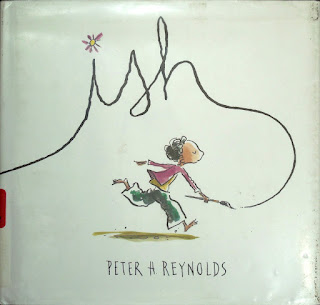
2. Give positive feedback
Ish reminds us that there are two kinds of feedback, a kind that builds confidence and a kind that ruins confidence.
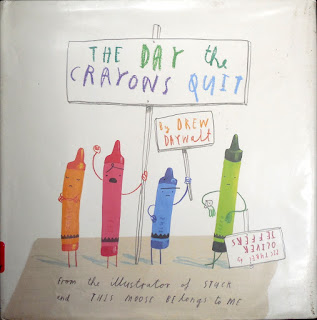
3. Be open to mistakes
The Day the Crayons Quit helps remind kids that having a rigid idea of how things ought to look is often a lot less interesting than being open to mistakes, difficulties, and new observations.
You can find more tips to boost kids confidence at https://artachieve.com/tips-for-teachers and at https://artachieve.com/faq-shttps://artachieve.com/faq-s
Ask “WHAT IF?”
A friend of Einstein hoped that her son might become a scientist, so she asked Einstein what kind of books her child should read to prepare to be a scientist.
Einstein replied, "Fairy tales and more fairy tales." The mother protested that she was really serious about this, and she wanted a serious answer, but Einstein persisted, noting that:
-
Having a creative imagination is an essential part of being a scientist, and
-
Fairy tales stimulate the imagination and introduce us to the world of WHAT IF.
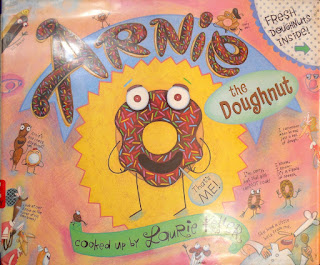
The hilarious book, Arnie the Doughnut, starts with a crazy WHAT IF. What if doughnuts could talk? What if they wanted to be our friends?!
Arnie the doughnut would have been EATEN alive if he hadn’t asked WHAT IF.
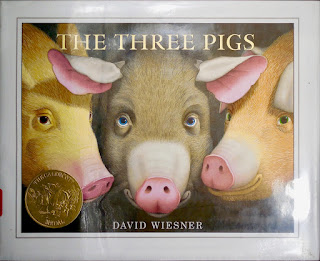
The book, The Three Pigs, applies WHAT IF to the fairy tale, "The Three Little Pigs." What if - when the wolf comes to blow the house down - he blows the pig out of the picture, and pigs are free to have some REAL adventures?
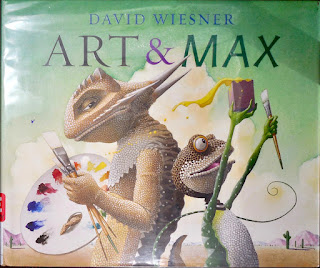
Art and Max begins by asking, “WHAT IF a character in a book were really only lines and color?”
-
If you could blow the color off the character, you’d get nothing but lines, and
-
and if lines are like string, you could unravel the drawing.
Give permission for special interests
If kids are inventive or original, other kids may find them to be “different.” This is not to say we should ask our kids to act weird just to stand out from the crowd, but they do need permission to get lost in a special interest and to find their own voice. Creative kids often don’t mind being alone because they’re so lost in their work. They ask questions others might find strange. But don’t worry. Thirty years from now those same nerds may become millionaires, and the quiet girl a novelist.
On the other hand, the search for popularity can be a risk factor for peer-pressure related problems. As long as your child has a good friend or two, that's healthier than being “popular."
Weslandia is a good reminder that pursuing your own interests may be more important than being popular.

Encourage persistence and curiosity.
When our kids were small, we had the habit of asking everyone around the dinner table, “What did you learn today?” It was our way of encouraging curiosity. Each day each of us had to tell about something interesting we had learned. But recently I heard of an even better question: “What question did you ask today?”
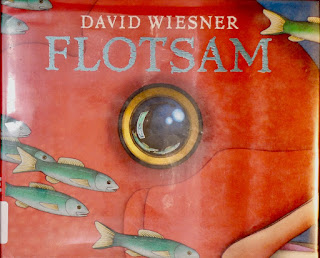
Flotsam is about a boy whose curiosity about the debris on a beach takes him on a trip around the world. It’s also a good reminder of the many other ways we can encourage creativity.
Last of all, get involved in one of the arts. (Here at ArtAchieve we favor the visuals arts, of course!)
Get started with an art lesson for kids with these free art lessons today.
And Picture Books To Illustrate Them
Here are 6 things you can do that will encourage your students' creative work.
Get Rid of Distractions
Creativity thrives in a quiet environment, for example:
-
Silence, or quieting sounds. (In our art lessons we recommend having music in the background because kids often find complete silence a bit overwhelming.)
-
Uncluttered space. Noise can distract us from creative work, but so can clutter.

The sparse layout of the book, Not a Box, is a reminder of how creative and productive we can be when we are not distracted by clutter and noise.
Set Boundaries
Creativity thrives on limitations and routine. Having a daily routine - devotions, mealtimes, chores, a routine for starting projects and for cleaning up - provides a foundation for that kind of quiet. Creativity isn’t helped by chaos.

Liza, in A Day with No Crayons, thinks she knows all there is to know about how to color - until she faces a limitation: a day without crayons. She discovers that there are lots of ways to make pictures, and you don’t NEED to have crayons to color. It has taken a limitation to give her creativity a boost.
Give the Gift of Confidence
There are plenty of kid’s books to remind us how to give kids the confidence they need to be creative.

1. Appreciate effort
In The Dot, Vashti is convinced that she cannot draw. However, when her teacher coaxes her to draw just one dot - and then frames the dot in a gold frame and hangs it on the wall - Vashti learns that her meager effort is vastly appreciated, and she creates a whole art show of dots. All it takes is a teacher who valorizes her effort, no matter how small.

2. Give positive feedback
Ish reminds us that there are two kinds of feedback, a kind that builds confidence and a kind that ruins confidence.

3. Be open to mistakes
The Day the Crayons Quit helps remind kids that having a rigid idea of how things ought to look is often a lot less interesting than being open to mistakes, difficulties, and new observations.
You can find more tips to boost kids confidence at https://artachieve.com/tips-for-teachers and at https://artachieve.com/faq-shttps://artachieve.com/faq-s
Ask “WHAT IF?”
A friend of Einstein hoped that her son might become a scientist, so she asked Einstein what kind of books her child should read to prepare to be a scientist.
Einstein replied, "Fairy tales and more fairy tales." The mother protested that she was really serious about this, and she wanted a serious answer, but Einstein persisted, noting that:
-
Having a creative imagination is an essential part of being a scientist, and
-
Fairy tales stimulate the imagination and introduce us to the world of WHAT IF.

The hilarious book, Arnie the Doughnut, starts with a crazy WHAT IF. What if doughnuts could talk? What if they wanted to be our friends?!
Arnie the doughnut would have been EATEN alive if he hadn’t asked WHAT IF.

The book, The Three Pigs, applies WHAT IF to the fairy tale, "The Three Little Pigs." What if - when the wolf comes to blow the house down - he blows the pig out of the picture, and pigs are free to have some REAL adventures?

Art and Max begins by asking, “WHAT IF a character in a book were really only lines and color?”
-
If you could blow the color off the character, you’d get nothing but lines, and
-
and if lines are like string, you could unravel the drawing.
Give permission for special interests
If kids are inventive or original, other kids may find them to be “different.” This is not to say we should ask our kids to act weird just to stand out from the crowd, but they do need permission to get lost in a special interest and to find their own voice. Creative kids often don’t mind being alone because they’re so lost in their work. They ask questions others might find strange. But don’t worry. Thirty years from now those same nerds may become millionaires, and the quiet girl a novelist.
On the other hand, the search for popularity can be a risk factor for peer-pressure related problems. As long as your child has a good friend or two, that's healthier than being “popular."
Weslandia is a good reminder that pursuing your own interests may be more important than being popular.

Encourage persistence and curiosity.
When our kids were small, we had the habit of asking everyone around the dinner table, “What did you learn today?” It was our way of encouraging curiosity. Each day each of us had to tell about something interesting we had learned. But recently I heard of an even better question: “What question did you ask today?”

Flotsam is about a boy whose curiosity about the debris on a beach takes him on a trip around the world. It’s also a good reminder of the many other ways we can encourage creativity.
Last of all, get involved in one of the arts. (Here at ArtAchieve we favor the visuals arts, of course!)
Get started with an art lesson for kids with these free art lessons today.
And Picture Books To Illustrate Them
Here are 6 things you can do that will encourage your students' creative work.
Get Rid of Distractions
Creativity thrives in a quiet environment, for example:
-
Silence, or quieting sounds. (In our art lessons we recommend having music in the background because kids often find complete silence a bit overwhelming.)
-
Uncluttered space. Noise can distract us from creative work, but so can clutter.

The sparse layout of the book, Not a Box, is a reminder of how creative and productive we can be when we are not distracted by clutter and noise.
Set Boundaries
Creativity thrives on limitations and routine. Having a daily routine - devotions, mealtimes, chores, a routine for starting projects and for cleaning up - provides a foundation for that kind of quiet. Creativity isn’t helped by chaos.

Liza, in A Day with No Crayons, thinks she knows all there is to know about how to color - until she faces a limitation: a day without crayons. She discovers that there are lots of ways to make pictures, and you don’t NEED to have crayons to color. It has taken a limitation to give her creativity a boost.
Give the Gift of Confidence
There are plenty of kid’s books to remind us how to give kids the confidence they need to be creative.

1. Appreciate effort
In The Dot, Vashti is convinced that she cannot draw. However, when her teacher coaxes her to draw just one dot - and then frames the dot in a gold frame and hangs it on the wall - Vashti learns that her meager effort is vastly appreciated, and she creates a whole art show of dots. All it takes is a teacher who valorizes her effort, no matter how small.

2. Give positive feedback
Ish reminds us that there are two kinds of feedback, a kind that builds confidence and a kind that ruins confidence.

3. Be open to mistakes
The Day the Crayons Quit helps remind kids that having a rigid idea of how things ought to look is often a lot less interesting than being open to mistakes, difficulties, and new observations.
You can find more tips to boost kids confidence at https://artachieve.com/tips-for-teachers and at https://artachieve.com/faq-shttps://artachieve.com/faq-s
Ask “WHAT IF?”
A friend of Einstein hoped that her son might become a scientist, so she asked Einstein what kind of books her child should read to prepare to be a scientist.
Einstein replied, "Fairy tales and more fairy tales." The mother protested that she was really serious about this, and she wanted a serious answer, but Einstein persisted, noting that:
-
Having a creative imagination is an essential part of being a scientist, and
-
Fairy tales stimulate the imagination and introduce us to the world of WHAT IF.

The hilarious book, Arnie the Doughnut, starts with a crazy WHAT IF. What if doughnuts could talk? What if they wanted to be our friends?!
Arnie the doughnut would have been EATEN alive if he hadn’t asked WHAT IF.

The book, The Three Pigs, applies WHAT IF to the fairy tale, "The Three Little Pigs." What if - when the wolf comes to blow the house down - he blows the pig out of the picture, and pigs are free to have some REAL adventures?

Art and Max begins by asking, “WHAT IF a character in a book were really only lines and color?”
-
If you could blow the color off the character, you’d get nothing but lines, and
-
and if lines are like string, you could unravel the drawing.
Give permission for special interests
If kids are inventive or original, other kids may find them to be “different.” This is not to say we should ask our kids to act weird just to stand out from the crowd, but they do need permission to get lost in a special interest and to find their own voice. Creative kids often don’t mind being alone because they’re so lost in their work. They ask questions others might find strange. But don’t worry. Thirty years from now those same nerds may become millionaires, and the quiet girl a novelist.
On the other hand, the search for popularity can be a risk factor for peer-pressure related problems. As long as your child has a good friend or two, that's healthier than being “popular."
Weslandia is a good reminder that pursuing your own interests may be more important than being popular.

Encourage persistence and curiosity.
When our kids were small, we had the habit of asking everyone around the dinner table, “What did you learn today?” It was our way of encouraging curiosity. Each day each of us had to tell about something interesting we had learned. But recently I heard of an even better question: “What question did you ask today?”

Flotsam is about a boy whose curiosity about the debris on a beach takes him on a trip around the world. It’s also a good reminder of the many other ways we can encourage creativity.
Last of all, get involved in one of the arts. (Here at ArtAchieve we favor the visuals arts, of course!)
Get started with an art lesson for kids with these free art lessons today.









